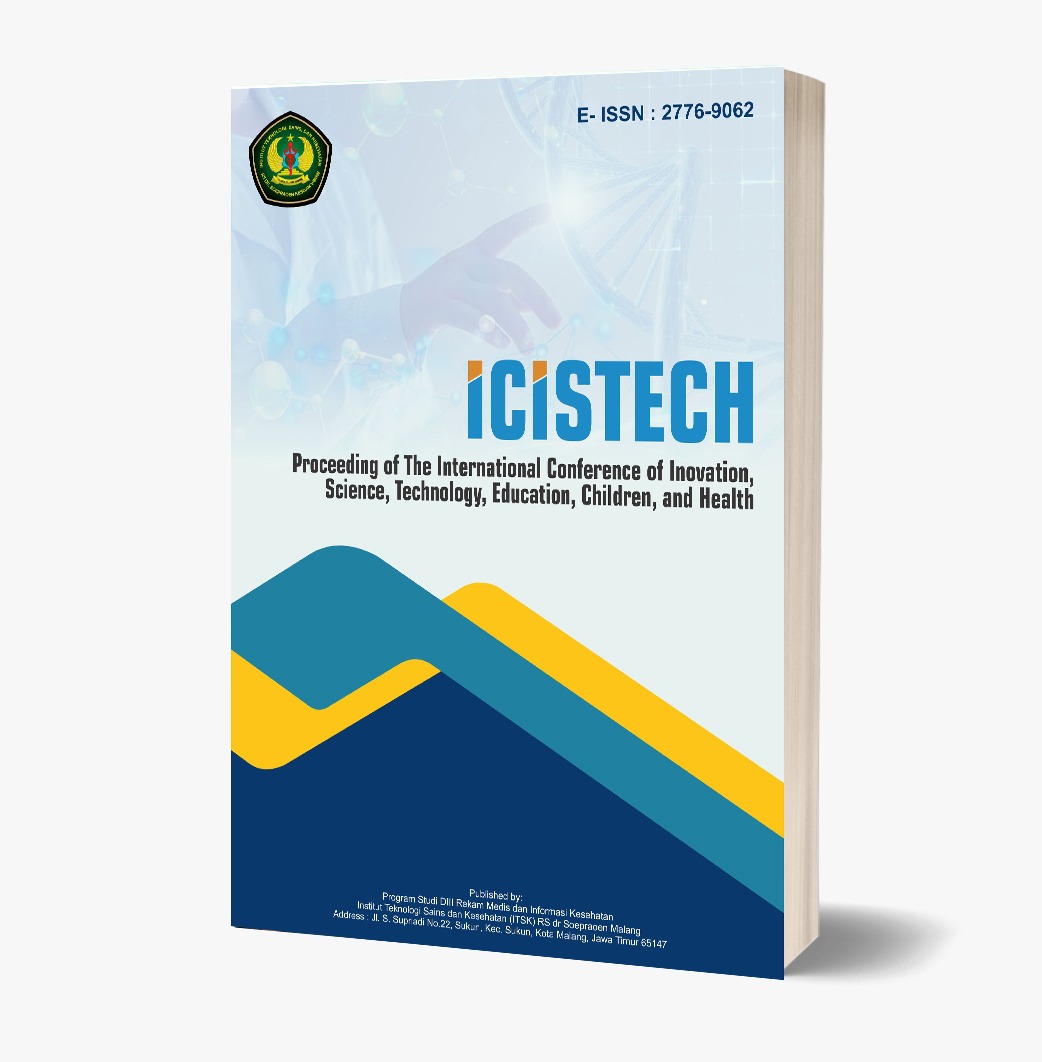Vaginitis Gonorrhea on Children: A case series
DOI:
https://doi.org/10.62951/icistech.v3i2.67Keywords:
vaginitis gonorrhea, STIs on children, sexual abuseAbstract
Background: Vaginitis gonorrhea is sexually transmitted infections (STIs) which caused by Neisseria gonorrhoeae and commonly found in children. Frequently, it indicates the sexual abuse in children. Although infrequent, nonsexual gonorrhea transmission, either from fomites, physical contact or autoinoculation may occur in children. Case report: Three cases of vaginitis gonorrhea on 3, 6 and 8 years old girl with a chief complaint of vaginal discharge that felt no itchy are presented. The history of sexual intercourse or abuse in two cases were denied but they had history of sharing baths and public swimming pool. In one case, there was alleged sexual abuse 6 months ago by her cousin. Physical examination revealed the yellowish odor vaginal discharge and there were no signs of inflammation around they genitalia. There were Gram-negative diplococcal intra and extra cellular. All of Thayer Martin culture revealed a positive result of Neisseria gonorrhoeae. Only one patient performed screening for the other STI, while two patient refused. All of these patients were treated with 125 mg intramuscular ceftriaxone injection but only 1 patient improvement, while 2 others recovered with alternative therapy based on the results of sensitivity test. Discussion : Patients were diagnosed as vaginitis gonorrhea based on physical examination and laboratory results. One case was suspected as sexual abuse while the other were suspected of non-sexual abuse such as fomite. The limitation of this case report are unidentified sources of gonococcal transmission and rejection for completed STIs screening.
References
Dayan, L. (2004). Transmission of Neisseria gonorrhoeae from a toilet seat. Sexually Transmitted Infections, 80, 324–328.
Dowell, D., & Kirkcaldy, R. D. (2012). Effectiveness of gentamicin for gonorrhea treatment: Systematic review and meta-analysis. Sexually Transmitted Infections, 88(8), 589–594.
Finlay, J., Miller, L., & Poupard, J. A. (2003). A review of the antimicrobial activity of clavulanate. Journal of Antimicrobial Chemotherapy, 52(1), 18–23.
Frieden, T. R., Harold, J. D. W., Rasmussen, S. A., Leahy, M. A., Martinroe, J. C., Spriggs, S. R., et al. (2015). Sexually transmitted diseases treatment guidelines, 2015. In W. L. Roper, C. Hill, M. L. Boulton, V. A. Caine, K. K. Holmes, & T. F. Jones (Eds.), Morbidity and Mortality Weekly Report (Vol. 64, pp. 60–68). Centers for Disease Control and Prevention.
Goodyear-Smith, F. (2007). What is the evidence for non-sexual transmission of gonorrhea in children after the neonatal period? A systematic review. Journal of Forensic and Legal Medicine, 14(8), 489–502.
Hammerschlag, M. R., & Guillén, C. D. (2010). Medical and legal implications of testing for sexually transmitted infections in children. Clinical Microbiology Reviews, 23(3), 493–506.
Hook, E. W., & Handsfield, H. H. (2008). Gonococcal infections in the adult. In K. Holmes, P. Sparling, W. E. Stamm, P. Piot, J. Wasserheit, L. Corey, et al. (Eds.), Sexually transmitted diseases (4th ed., pp. 627–642). McGraw-Hill.
Indira, I. G. A. A. E., Elvina, P. A., Puspawati, M. D., & Wiguna, A. A. G. P. (2019). Vulvovaginitis gonococcal in a child: A case report. Indonesian Journal of Biomedicine Science, 13(1), 36.
Kohlhoff, S. M., & Hammerschlag, M. (2008). Gonococcal and chlamydial infections in infants and children. In K. Holmes, F. Sparling, W. E. Stamm, & P. Piot (Eds.), Sexually transmitted diseases (4th ed., pp. 1613–1620). McGraw-Hill Companies.
Lim, K. B., Giam, Y. C., Sng, E. H., & Yeo, K. L. (1984). Two-dose Augmentin treatment of acute gonorrhea. British Journal of Venereal Diseases, 60(May 1983), 161–163.
Ng, L. K., & Martin, I. E. (2005). The laboratory diagnosis of Neisseria gonorrhoeae. Canadian Journal of Infectious Diseases and Medical Microbiology, 16(1), 15–25.
Rosen, T. (2012). Gonorrhea, mycoplasma, and vaginosis. In L. A. Goldsmith, S. I. Katz, B. A. Gilchrest, A. S. Paller, D. J. Leffell, & K. Wolff (Eds.), Fitzpatrick’s dermatology in general medicine (8th ed., pp. 2514–2521). McGraw-Hill.
Ross, J. D. C., Brittain, C., Cole, M., Dewsnap, C., Harding, J., Hepburn, T., et al. (2019). Gentamicin compared with ceftriaxone for the treatment of gonorrhea (G-ToG): A randomized non-inferiority trial. The Lancet, 393(10190), 2511–2520.
Workoski, K., & Bolan, G. (2015). Centers for Disease Control and Prevention. Sexually transmitted disease. MMWR, 64(5), 1–235.
Workowski, K. A., & Bolan, G. A. (2015). Sexually transmitted diseases treatment guidelines 2015. In S. A. Rasmussen, C. K. Kent, C. G. Casey, T. F. Rutledge, D. C. Johnson, & R. J. Wilson (Eds.), Morbidity and Mortality Weekly Report (Vol. 64, pp. 140). Centers for Disease Control and Prevention.
World Health Organization. (2016). WHO guidelines for the treatment of Neisseria gonorrhoeae. WHO Document Production Services.
Downloads
Published
How to Cite
Issue
Section
License
Copyright (c) 2023 Proceeding of The International Conference of Inovation, Science, Technology, Education, Children, and Health

This work is licensed under a Creative Commons Attribution-ShareAlike 4.0 International License.













